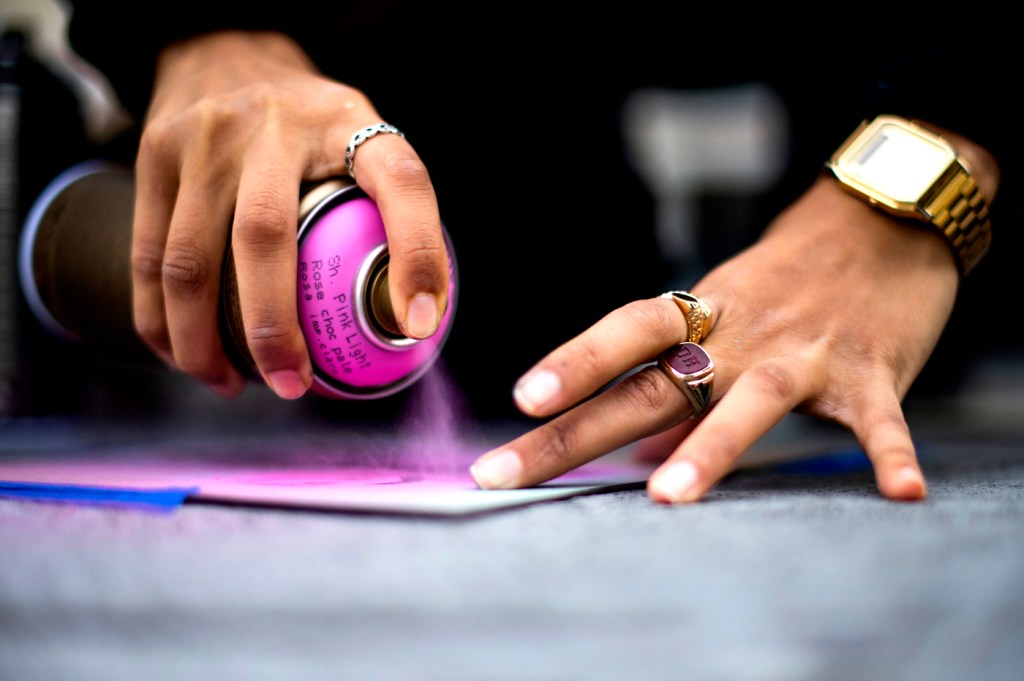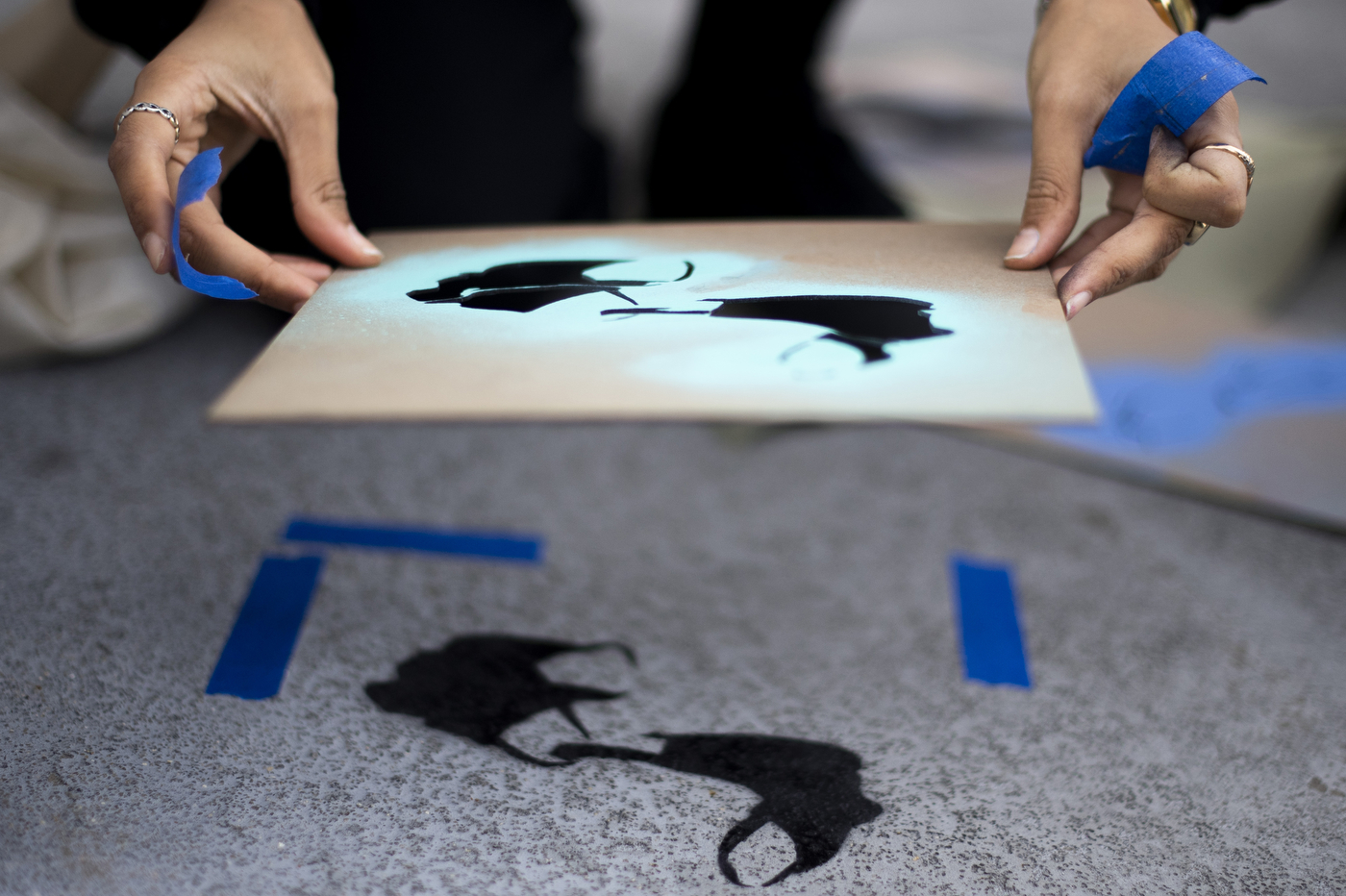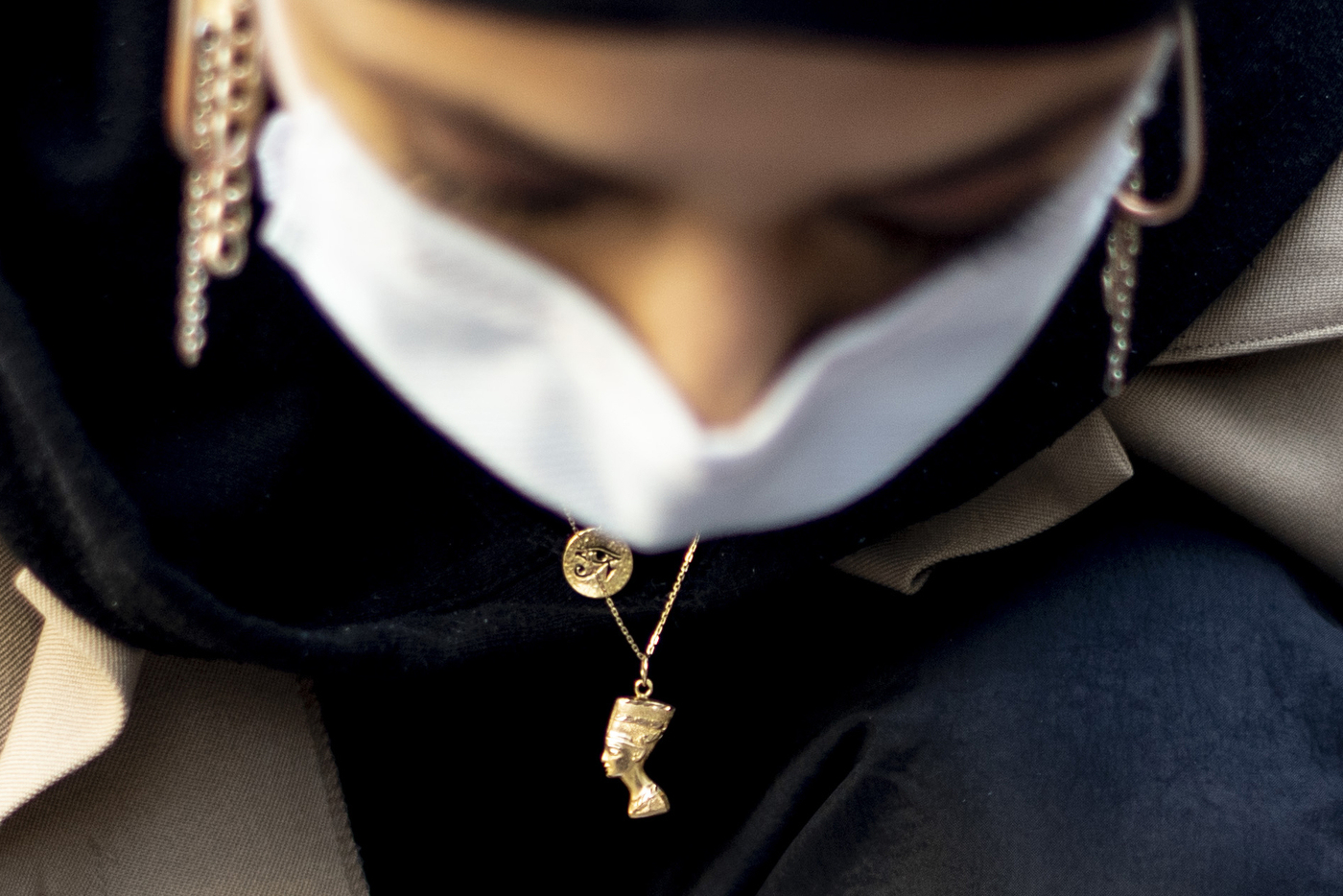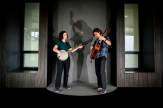Anthropomorphic mask art installation on the Boston campus fosters connection despite COVID-19 social distancing measures

Standing in a train traveling along Boston’s Red Line, with one hand gripping the steel pole, Amera Youssef noticed a couple across the tracks leaning in for a kiss. The sight was common enough that it ordinarily wouldn’t have caused her to do a double take, except in this instance the couple shared their peck through cloth face masks.
Youssef was departing South Boston from her co-op at architecture and design firm Hacin + Associates. Days later, the fourth-year architecture student at Northeastern was still ruminating on what she’d seen.
“It kind of stuck with me, remembering the fact that they were showing affection through their masks,” she says. “It was just this very nice and intimate moment and I really wanted to portray that intimacy despite the conditions that we’re under right now.”

The anthropomorphic art installation by Amera Youssef took a total of four-and-a-half hours. Photo by Matthew Modoono/Northeastern University
Public displays of affection are common in her native Egyptian culture, says Youssef. Kisses on the cheek are customary when greeting friends and loved ones, sometimes even strangers. Before the pandemic, she enjoyed hugging her friends. Losing that has made Youssef feel strange, but the restrictions wrought by COVID-19 have prompted her to consider alternative methods of showing affection.
“With all of this going on, it just made me go a little more out of my way to make sure that people know that I’m here for them,” she says.
Two months ago, Youssef approached Thomas Vannatter, the public art manager in charge of curating and managing the public art across Northeastern’s campuses, about an idea for an art installation. She showed him a sketch of two figures “kissing” through their masks. The collaboration led to Youssef agreeing to create a series of anthropomorphic masks for a temporary art installation on the Boston campus.
Vannatter helped her acquire the necessary approvals, and after a few more design iterations—which involved refinements using Illustrator, stenciling the designs by hand using Bristol board, transferring the stencils digitally, and laser cutting the stencils out of chipboard—Youssef was ready to launch her first ever exhibit.

The installation itself took a total of four-and-a-half hours on a Friday afternoon in late November. Each piece—spray-painted in various locations throughout the university’s Boston campus—shows a pair of masks facing away from each other, but connected by a string. The idea, says Youssef, was to capture the social isolation and yearning for affection that many are undoubtedly feeling because of the pandemic.
“The idea behind it was to show how we’ve changed and how we’ve morphed our ideologies around COVID-19 and how we’re adjusting to our new circumstances,” she says. “And then as it went through approvals, we had to make a change so that it’s not giving off the wrong impression. And that’s why they’re linked by the strings of the masks and they’re facing away from each other—to show that there’s distance, but at the same time, we’re all still connected with our own experiences through COVID-19.”




The pieces range in size from six to eight inches. They’re scattered throughout the campus, bringing light and a pop of color to eight different locations, mostly on curbsides and on the sides of streets, delighting the observant passerby. The most prominent piece is outside Wollaston’s. Another one adorns the outside of the architecture studio. One can be spotted near Richardson Quad.
Each piece consists of three different layers, and each of those is composed of a different color so that when they’re stacked atop each other, the colors meld together.

They pieces are scattered throughout the campus, bringing light and a pop of color to eight different locations, mostly on curbsides and on the sides of streets. Photo by Matthew Modoono/Northeastern University
“I wanted it to be super simple and abstract so that it’s obvious, but without too much detail that it’s taking away from the meaning of the piece itself rather than it being about color or about anything else,” Youssef says.
Feedback about the installation so far has been positive, she says. Friends who’ve seen the pieces around campus have remarked about how the message behind the art has resonated with them.
“That was kind of the intention behind it: An obvious piece that was small and that depicts how our everyday is right now,” she says.
Youssef is already thinking about her next installation. One idea she has in mind is to portray three or four animated characters exhibiting similar body language, but standing six feet apart from each other. The characters wear their emotion through their masks.
“I have all these different iterations and I’m trying to see where they can go,” she says.
For media inquiries, please contact media@northeastern.edu.




